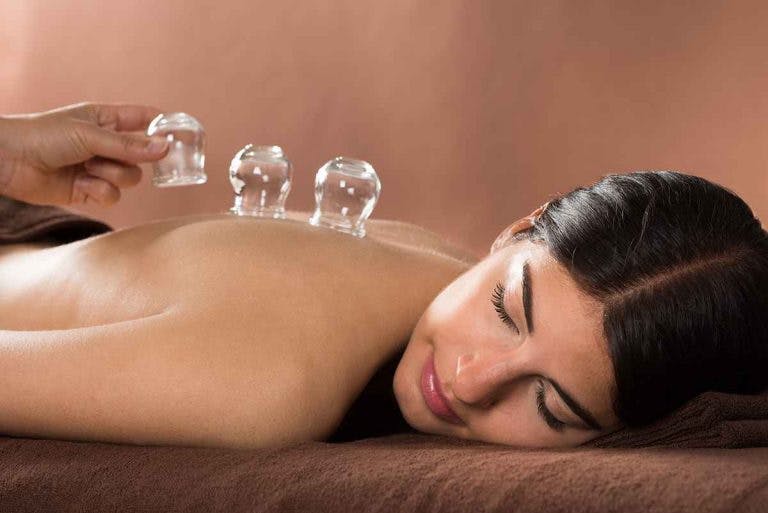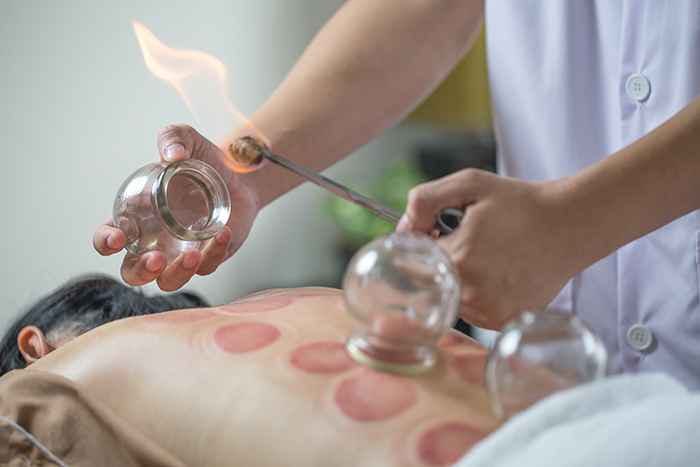Cupping Therapy Explained: A Guide to an Ancient Yet Effective Alternative Medicine
Published | 5 min read
The world's top athletes use cupping therapy. It effectively treats many health disorders, but it can seem scary due to the bruises they cause.

The Olympic Games is not just a showcase of talent from some of the world’s best athletes. It also sheds light on the different ways athletes prepare for the daunting demands of competition. These include cupping therapy, made famous by the most decorated Olympian of all time, Michael Phelps.
What exactly is cupping therapy? Simply put, it’s an ancient Traditional Chinese Medicine (TCM) remedy that can help provide distinct health benefits. Typically, cupping uses glass or plastic cups to apply suction and heat to meridian points (energy pathways) on the body. In doing so, cupping may treat imbalances in the body by rejuvenating meridians and improving qi circulation.
Here are the available methods and health benefits of cupping therapy, explained.
Common Methods Used in Cupping Therapy

Cupping therapy generally indicates reversing the signs of ageing and reinvigorating the body. It can also help in the management of localised ailments like acne, neck and low back pain, and systemic illnesses like facial paralysis (Bell’s palsy) and herpes zoster. According to Eu Yan Sang’s TCM physician Kong Teck Chuan, people with diabetes, hypertension, high cholesterol, or blood-related diseases should avoid cupping. Pregnant women and people on blood-thinning medications, too, should stay away from this remedy.
It’s worth noting that cupping therapy uses either a plastic cup or glass cup method. With the plastic cup method, a therapist uses a pump on the top of the cup to suck the air out and create a partial vacuum effect. Glass cupping, meanwhile, relies on a small flame to create suction. In other cultures, a therapist may also use animal horns, bamboo cups or a Nabhi pump.
Stationary cupping
This method involves stationing suction cups on several areas of the body for approximately 10-15 minutes.
Slide cupping
This technique is traditionally performed on large muscle groups and starts with the application of massage oil on the back. Then, 1 or 2 cups will be moved along the meridians to identify areas with stagnation and poor blood flow.
Fire cupping
This method has been practised for millennia and starts with a therapist applying cream or massage oil to the back. Though, it’s important to find out if a physician is qualified and has the experience to carry out the fire cupping technique before undergoing treatment. Next, the therapist will light an alcohol-soaked cotton ball and quickly insert and take it out of the cup repeatedly to create a vacuum seal. This method aims to lift the fascia, thus extracting dampness and lactic acid from the body.
Cupping and acupuncture in tandem
Acupuncture involves the insertion of thin, sterile needles through specific acupoints on the body. It promotes a positive flow of qi and is commonly used for relieving pain and improving a person’s health holistically. Cupping can help to bring built-up tension to the surface before being released through acupuncture.
3 Health Benefits of Using Cupping Therapy
TCM believes cupping can address various health disorders. “Cupping can be an appealing therapy option as it can treat many health problems, often with immediate results,” explains physician Kong.
Helps to relieve a common cold or the flu
The symptoms of a cold or the flu are indicative of pathogens creating stagnation in the meridians. Flash cupping — a quick, repeated application of cups — and slide cupping along the Du meridian can help regulate qi, expel wind and relieve a Wind-Cold type cold.
Cupping to massage deep tissue can also improve blood flow whilst detoxifying a cupped area and its connected regions. Consuming a TCM formulation that combines dried tangerine peel (Chen Pi), lemon, honey, bitter gourd, and brown sugar is equally effective in regulating qi and removing phlegm. It’s also beneficial for relieving coughs, stimulating qi flow in the spleen and stomach, and removing dampness from the body.
Promote healthy weight loss

In TCM, it’s believed that obesity is the product of digestive system impairments. Because of this, cupping effectively promotes digestion, improves bowel movement, and removes waste from the body, says physician Kong. The consumption of a TCM remedy containing fruit and vegetable powders has the same effect of preventing toxins.
Alternatively, weight gain may relate directly to our emotions. For instance, a person possibly chooses to indulge in unhealthy foods because of their comfort from eating. Similarly, a person may also give in to cravings whenever they’re undergoing stress or feeling upset.
In this regard, cupping helps improve blood circulation and release leptin hormone in the body. This hormone, particularly, can help to manage hunger by controlling a person’s impulse to overeat.
Helps to alleviate muscle aches
Stress, physical injury, an unhealthy diet or sitting for long periods with poor posture can strain the fascia. In turn, this can lead to pain, a reduced range of motion and damage to the joints, muscles and tendons.
Therefore, a person can consider cupping to stretch the fascia, tissue relaxation, enable nutritive fluids to flow into the tissue and elongate the fibres. “Suction and heat draw out dampness, which is a common cause of such conditions,” advises physician Kong. Repeating this process regularly will allow a person to do away with tension and improve circulation for long-lasting relief.
The number of sessions a person needs to help manage ailments depends on the purview of a physician. In the same way, a physician may also consider a person’s response to this TCM treatment. Interestingly, people who are generally in good health can also use cupping therapy to relax and maintain overall wellness. If you’ve not done cupping previously, that’s alright, for it’s never too late to jump on this soothing, remedial bandwagon.
This is an adaptation of an article, “Cupping for Beginners”, which first appeared on Eu Yan Sang website.
References
- Physiopedia. Cupping Therapy. [Accessed on 10 October 2021]
- Empower Chiropractic + Acupuncture. 2019. Cupping: What You Need to Know. [Accessed on 10 October 2021]
- National Library of Medicine. 2015. Traditional Chinese medicine for neck pain and low back pain: a systematic review and meta-analysis. [Accessed 10 October 2021]
- PLOS ONE. 2012. An Updated Review of the Efficacy of Cupping Therapy. [Accessed 10 October 2021]
- American Institute of Alternative Medicine. Chinese Cupping Therapy in Massage and Acupuncture. [Accessed 10 October 2021]
- US National Library of Medicine. 2010. Clinical research evidence of cupping therapy in China: a systematic literature review. [Accessed 23 August 2021]
- QAYA Clinic. Hijama Cupping for Weight Loss. [Accessed 10 October 2021]
- Lakes Holistic Care. 2019. How Cupping Can Help Chronic Muscle Tension & Pain. [Accessed 10 October 2021]
Share this article on






